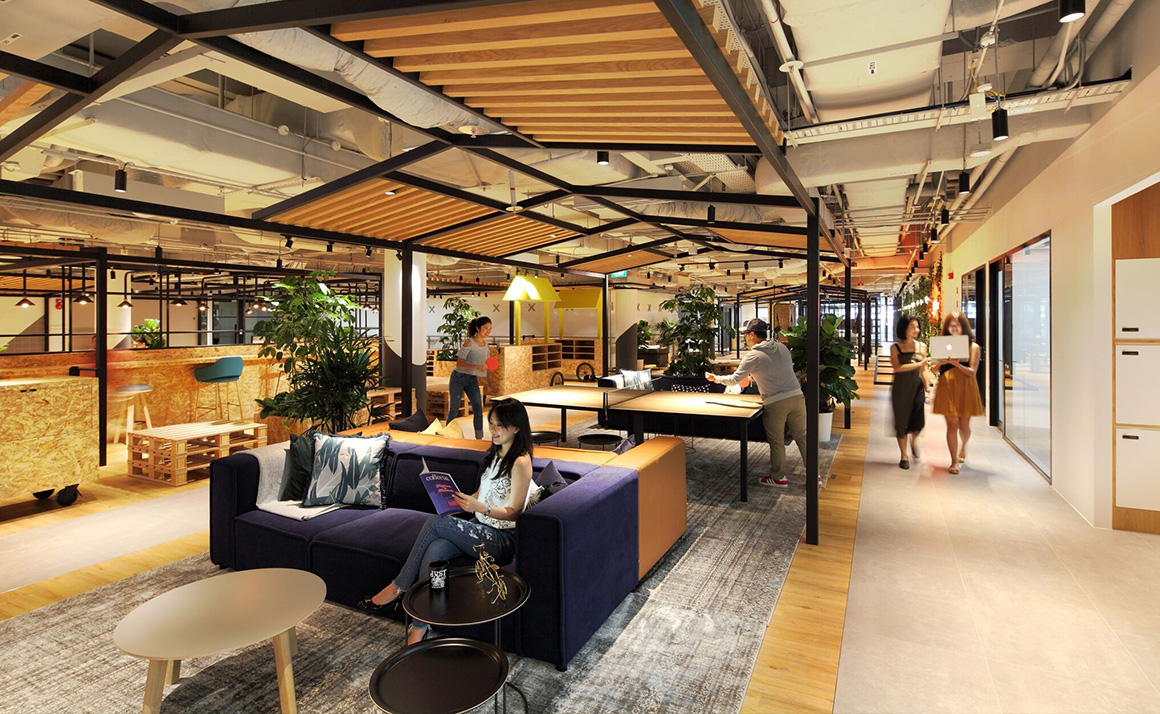
Coworking holds steady in Asia Pacific despite WeWork collapse
Discover the resilience of the flexible office space sector in the Asia Pacific region. Despite WeWork's Chapter 11 filing, various operators thrive as hybrid working practices become embedded.
Coworking pioneer WeWork has hit the headlines after filing for Chapter 11 bankruptcy protection in the US, however the broader flexible space sector remains an important part of office markets around the Asia Pacific region.
While WeWork is the firm in the news, it is just one flexible office space company of many operating across the Asia Pacific region. Simon Smith, Head of Research and Consultancy at Savills Asia Pacific, says: “Hybrid working practices are embedded, to a greater or lesser degree, across the Asia Pacific region and start-ups and spin-offs will always need flexible space.
“While coworking emerged in the past decade, flexible office space isn’t a new concept; Regus has been in this business for more than 30 years and there are other well-established operators native to this region.”
The success of flexible office space operators is closely linked to that of the wider office market. Where the office market is brighter, so are the prospects for flexible space. Seoul offices have been outperforming the sector in the rest of the region and indeed the rest of the world thanks to tight supply and Koreans’ lack of enthusiasm for homeworking. As a result, Savills data show Seoul office rents rising 7.1% in the 12 months to June 30.
Coworking has benefitted from the overall trend, as demonstrated by The Executive Centre, which has facilities across Asia Pacific, taking 2,900 sq m in the Hana Securities Building in the Yeouido Business District for a new flexible office space. JoAnn Hong, Senior Director, Research and Consultancy, Valuation at Savills Korea says: “Domestic players such as Fastfive and Sparkplus have announced mid-term plans to expand in the secondary office space, however low prime vacancy of 1.8% is the main obstacle to expansion”.
Meanwhile in India, while office demand has dipped this this year, flexible workspaces have become an important occupier segment. Savills data show that 21.6% of office leasing in major cities came from the flexible workspace sector, putting it ahead of financial services and only behind the IT industry.
While Japanese office workers are mainly back in the office, hybrid working practices have gained traction since the pandemic. Tetsuya Kaneko, Head of Research and Consultancy at Savills Japan, says: “We have seen the growth of coworking and other flexible office models. Japan is seeing more flexible working arrangements which benefit such companies.
“In addition, I believe there is more potential in this market, especially for established domestic developers who have assets in prime areas where they can more easily and flexibly install coworking spaces. International coworking brands may also find more opportunities to access the best office buildings in the current softer office market.”
In Australia, the flexible workspace market had recovered steadily since the beginning of this year, but may be affected by a weaker economic outlook, as in Singapore, where Alan Cheong, Executive Director, Research and Consultancy at Savills Singapore, says: “While there is still demand for coworking space, the economic headwinds are getting stronger by the month.”
Simon Smith, Head of Research and Consultancy at Savills Asia Pacific, concludes: “We can see that the fortunes of flexible office space operators are closely linked to that of the wider office market, but there will always be a need for more flexible options. In the future, we expect more landlords to offer some sort of flexible option, which they may do in partnership with specialist brands.”
Further reading:
Savills Prime Benchmark
Contact Us:
JoAnn Hong



